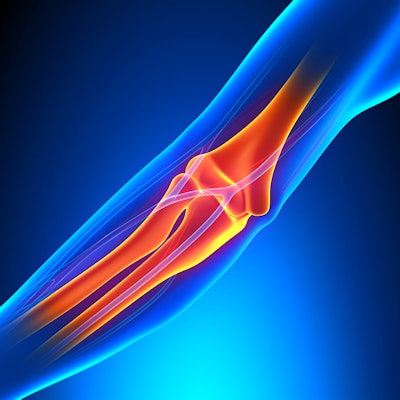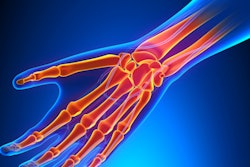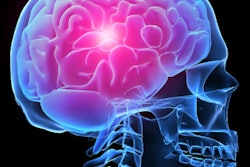
Ultrasound strain imaging can be an effective tool for assessing poststroke muscle spasticity or tightness, a condition that affect two-thirds of stroke survivors, according to a study published in the August issue of the Journal of Ultrasound in Medicine.
The effects of spasticity on muscle after a stroke can include contractures, limited range of joint motion, and pain. Spasticity manifests most often around the elbow, the wrist, and the ankle, but it can also affect other parts of the body, including the biceps brachii muscle, or elbow flexors.
There hasn't been an effective way to measure spasticity to determine which interventions are best for patients after a stroke, wrote a team led by Dr. Jing Gao of Weill Cornell Medicine in New York City.
"To date, this process [of measuring spasticity] remains challenging because of the lack of a reference standard. ... It would be ideal to have a noninvasive imaging technique to quantify the mechanical properties and dynamic movement of spastic muscle to assist clinicians in the diagnosis of spasticity, monitoring of disease progression, and evaluation of treatment response in stroke rehabilitation," the group wrote.
Ultrasound strain imaging has been shown to be useful for assessing the stiffness of skeletal muscle, but little is known about using the technique to assess skeletal muscle dynamic motion. Gao and colleagues sought to evaluate the feasibility of strain imaging for assessing spasticity in the biceps of stroke survivors (J Ultrasound Med, August 2018, Vol. 37:8, pp. 2043-2052).
The study included eight healthy volunteers and seven stroke survivors recruited between February and July 2017; the investigators gathered ultrasound strain imaging data from all participants.
They found a significant increase in muscle stiffness, represented by a decrease in muscle axial strain in the spastic biceps brachii muscles compared with the nonspastic muscles. The researchers also found decreased lengthening and shortening capability (i.e., longitudinal strain ratio) and tissue velocity in the spastic muscles versus the nonspastic ones.
| Ultrasound strain imaging measures for biceps brachii muscle | ||
| Measure | Nonspastic biceps | Spastic biceps |
| Axial strain ratio (90°) | 4.87 | 3.13 |
| Axial strain ratio (0°) | 4.02 | 2.65 |
| Longitudinal strain ratio (90° to 0°) | 5.79 | 3.12 |
| Longitudinal strain ratio (0° to 90°) | 6.56 | 3.25 |
| Tissue velocity (90° to 0°) | 2.16 | 1.33 |
| Tissue velocity (0° to 90°) | -2.09 | -0.95 |
The study suggests that ultrasound strain imaging could help clinicians better assess a patient's poststroke spasticity and perhaps better manage the condition, Gao and colleagues concluded.
"Ultrasound strain imaging is a useful imaging tool for determining increased stiffness and decreased dynamic displacement in spastic biceps brachii muscles by assessing the axial strain, longitudinal strain, and tissue velocity of the muscle," they wrote. "These noninvasive strain imaging markers may have potential in improving the point-of-care management of chronic poststroke spasticity."




















